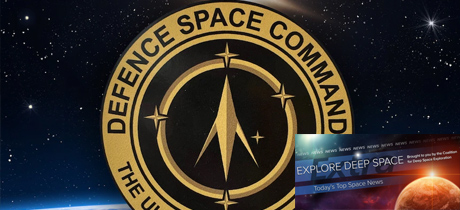In Today’s Deep Space Extra… U.S. and European spacewalkers perform International Space Station maintenance. Small companies contribute big time to human space exploration.
Human Space Exploration
2 astronauts performing spacewalk Wednesday morning: Watch live
Space.com (3/23): NASA and European Space Agency (ESA) astronauts Raja Chari and Matthias Maurer are to embark on a planned 6 1/2-hour spacewalk outside the International Space Station (ISS) on Wednesday just before 9 a.m. EDT. The primary task is the installation of refurbished hoses on a radiator beam valve module. The module helps to provide thermal control for the ISS through the flow of ammonia coolant within outstretched radiator panels. The spacewalk is Chari’s second within the past eight days and Maurer’s first ever. NASA is airing the activities on NASA TV and streaming at www.nasa.gov/nasalive.
Legally, Russia can’t just take its Space Station and go home
Ars Technica (3/22): Since 1998 and the start of its assembly, the International Space Station (ISS) has operated under an Intergovernmental Agreement (IGA) that governs obligations and operations among the partner nations. Like the orbital lab itself, the IGA is more than a sum of its partners, explains Joanne Irene Gabrynowicz, an emeritus professor of law at the University of Mississippi and an expert on the IGA. Historically, Russia because of its Soviet predecessor, can justifiably claim itself as the first nation in space and likely very much wants to preserve its reputation as a global space power. Stepping from the ISS partnership, as the head of Russia’s space agency, Roscosmos, has threatened, could actually end Russia’s civil space program. “The bottom line is this: There are sound technical, legal, and political reasons for Putin’s Russia to remain involved in the International Space Station for as long as the West will have them,” according to Ars Technica’s assessment.
Space Science
Mars helicopter Ingenuity soars on 22nd Red Planet flight
Space.com (3/22): NASA’s Ingenuity Mars helicopter took flight for a 22nd time on Sunday, staying aloft for 101.4 seconds and reaching an altitude of 33 feet. Currently Ingenuity’s reconnaissance is helping Earth-based mission teams choose the best route for NASA’s Perseverance Mars to transit the floor of Jezero crater on Mars to a companion ancient stream delta. There, the rover will gather additional samples of the Martian surface for eventual return to Earth so they can be studied for possible evidence of past biological activity.
Comet Leonard has broken into pieces as it rounds the sun: report
Space.com (3/22): Comet Leonard, discovered on January 3, 2021, has broken apart following its closest approach to the sun earlier this year. Astronomers spotted Leonard undergoing strong outburst activity days before Christmas.
Opinion
The fruition of a dream
Stwnewspress.com of Stillwater Oklahoma (3/15): Once known as the “final frontier,” space is actually the “future frontier,” writes Brenda Rolls, president and CEO of Frontier Electronic Systems (FES). FES is a small Oklahoma high tech company that provides electronics for aerospace endeavors including the International Space Station (ISS), NASA’s Space Launch System (SLS) and Orion crew module, and the CST-100 Starliner. “Oklahoma is not typically thought of as a ‘space’ state, but we are,” writes Rolls, whose heritage includes Native American. “Together with hundreds of small businesses like mine across 48 states, we are working to manufacture the parts and technology to take the SLS and America’s future in space, from a possibility to a reality.”
Other News
Space commander ‘scared’ Australia lagging in military space capability, as Russia and China reach for the stars
ABC.net.au/news of Australia (2/22): Australia has joined with the U.S. in establishing a Space Command branch of its military, citing concerns over Russia and China abilities to take out satellites. The country’s new Defense Space Command combines resources from Australia’s RAAF, Navy, and Army. The command officially launched on Tuesday and is headed by Air Vice-Marshal Catherine Roberts.
Russia launches Meridian communications satellite to Molniya Orbit
NASAspaceflight.com (3/22): A Soyuz 2a.1 rocket launched Tuesday from Russia’s Plesetsk Cosmodrome has placed a Meridian communications satellites into a high inclination, highly elliptical orbit, one beneficial for communications well north and south of the equator.
Blaming inflation, SpaceX raises Starlink and launch prices
SpaceNews.com (3/23): SpaceX’s smallsat rideshare program is now charging $1.1 million to place up to 200 kilograms into sun-synchronous orbits, with additional mass costing $5,500 per kilogram. The company has previously charged $1 million for up to 200 kilograms and $5,000 per kilogram for additional mass. The new prices represent a 10% increase. The company has also hiked prices for dedicated Falcon 9 and Falcon Heavy launches. A price sheet on their website now lists a price of $67 million for a Falcon 9 and $97 million for a Falcon Heavy. A version of the document from earlier this year listed prices of $62 million for the Falcon 9 and $90 million for the Falcon Heavy. The new prices reflect increases of about 8%.

